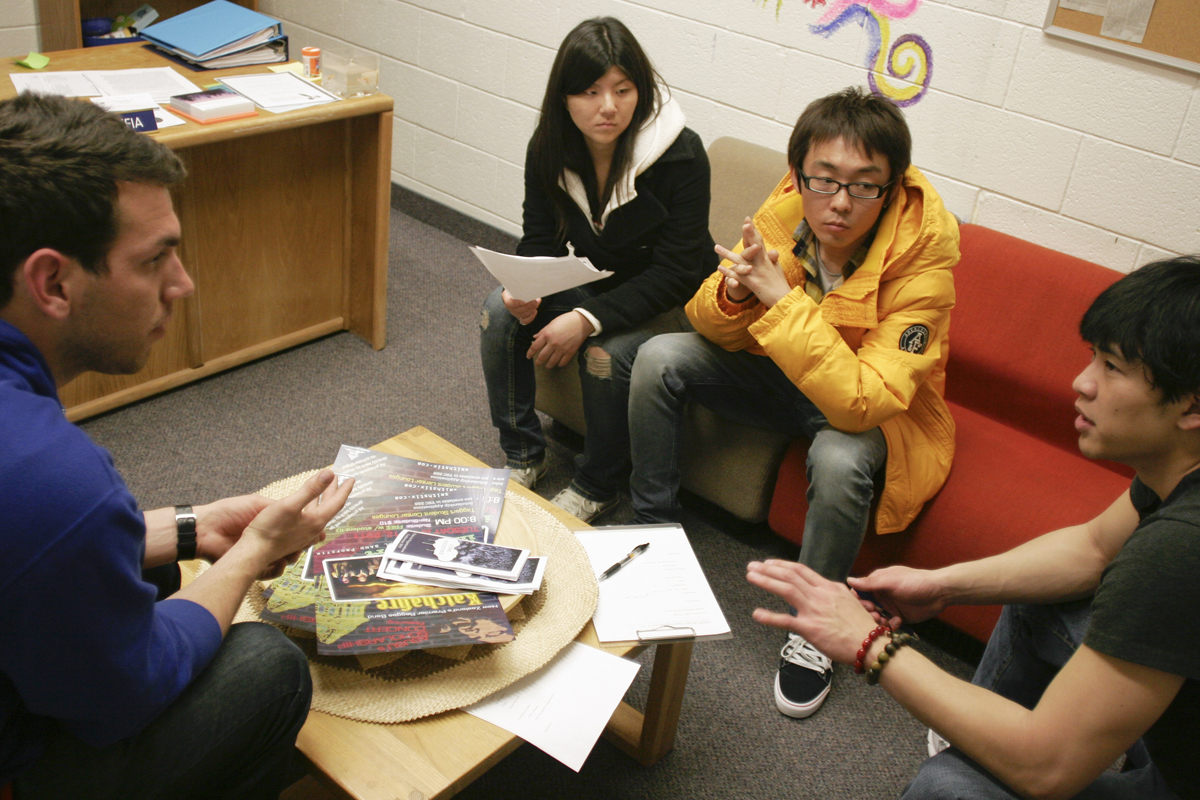Students experience Japan disaster, relief efforts begin
When the 8.9-magnitude earthquake shook northeast Japan on March 11, USU sophomore Brett Stevenson was on a boat in Tokyo, and said he saw and felt things there he will never forget.
The intensity of the quake caused a 33-foot tsunami that wiped out the majority of Sendai, affecting an area where more than 2 million people live. Furthermore, two of Japan’s nuclear power plants have been severely damaged and are causing radiation sickness. An estimated 10,000 have been recorded dead.
Stevenson is now safe in Logan, and said the chaos he witnessed while in Tokyo is still difficult to believe.
“It was really weird because we went out that night to walk around the streets and see what was going on and there were just thousands on the street stranded because all the public transportation was down,” Stevenson said. “They were walking four to five hours to get home that night.”
Misu Zu, a junior in biology, has been keeping in close contact with her family that lives in Tokyo, which is located about 200 miles south of Sendai. Zu is an exchange student at USU for the spring semester, and said she is scared for her friends in Sendai. She has not heard from any of them, but has found hope that they are safe.
“I couldn’t believe it the first time I heard it because I have never experienced such an earthquake,” Zu said. “The biggest I experienced is level three or four (on the Richter scale).”
Zu’s parents told her entire bookshelves toppled and two big lights fell from the ceiling and shattered across the ground. Her neighbor’s roof caved in completely.
A group of 16 USU business students were sitting in a meeting in Kyoto when they started to feel the quake, however, those conducting the business meeting assured them earthquakes similar happened often, said Robyn Renee, a graduate student studying business administration.
“We didn’t see much of the repercussions until we went over to Tokyo,” Renee said. “We were trying to get to the airport and had to take a bus and got really lucky as far as transportation goes.”
After seeing photographs and videos of the wreckage in northeastern Japan, USU students organized a meeting on Monday in the TSC to bounce ideas around about possible campus relief efforts. In the meeting, ASUSU administrative assistant Keenan Nuehring said a new student volunteer organization called STEPS is heading up the relief effort with help from the LDS Institute, USU’s A-Team and Americorps. All money raised will go to the Japanese Red Cross to ensure Japan directly benefits from the students’ efforts. A follow-up meeting was organized for Wednesday at 7 p.m. on the third floor of the TSC.
Zu and Naoki Uramoto are both members of the Japanese Club and attended Monday’s meeting. Uramoto’s home in Tokyo was also damaged by the quake, and he said the last thing he heard about his father was that he left Sunday and still had not come home by Monday night because the majority of transportation stopped. His girlfriend is living with 8-10 people in a small apartment because her parent’s home is not livable after being taken out by the massive wave of the tsunami.
“I just want to be with my family right now,” Uramoto said, “Just for the emotional damage; I want to be there for them. The images are shocking. If I feel like that 1,000 miles away, I can’t even imagine how they feel.”
He also said it’s devastating to think about what will happen to Tokyo’s economy, seeing as the Tokyo stock market has already plunged more than 6 percent. Uramoto is working with Nuehring and other members of the Japanese Club to get relief efforts rolling and donate as much funding as possible.
“It’s going to take years to get some of these places back to normal,” Stevenson said. “If you were going outside to clean up you just have no idea where to start. You want to pick up garbage? Everything is garbage.”
Stevenson’s father is the Latter-day Saint area president for the Asia north missions and it was his responsibility to make sure all the missionaries were accounted for. He said 28-32 hours after the quake there were still missionaries missing, but all have been found since.
“He didn’t sleep at all that night because of the time difference between Japan and Salt Lake,” Stevenson said. “He had to call around and make sure everyone was found.”
Though the organization of the entire city was thrown askew, Stevenson said there was a strange, calm feeling when the largest quakes passed. This feeling remained though there were thousands stranded who were finding shelter in convenient stores, he said.
“I’ve lived in Japan for five years and I’ve been through a lot of earthquakes,” Stevenson said. “That night I think everyone had the same feelings like ‘Oh, it’s just another earthquake,’ but then we heard about the tsunami. There was a really weird feeling over the city, it was eery.”
In the packed Tokyo airport, slammed with three days worth passengers trying to pile onto the same flights, Stevenson said he was able to board one of the first flights out of Tokyo to the U.S.
– catherine.meidell@aggiemail.usu.edu

